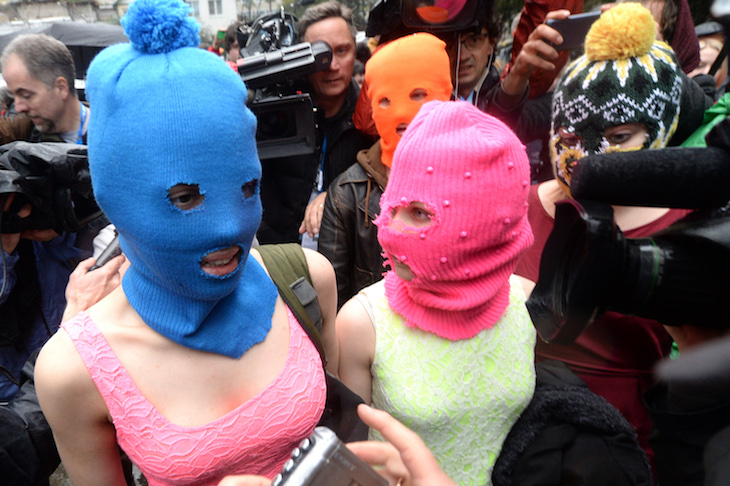What makes for meaningful political protest? In regimes where ideology was taken seriously (such as the Soviet Union or America during the Cold War), dissidents and dissenters could target rulers’ political ideas, whether communist or capitalist. But in regimes where ideology is used more to distract than indoctrinate (such as Putin’s Russia or Trump’s America), directly opposing the leaders’ ‘narrative’ (one which can change, depending on political expedience) risks playing right into their game. As Trump’s former strategist Steve Bannon revealed in an interview with American Prospect, Trump’s race-baiting has provoked Democrats into focusing on identity issues, which is just the argument Bannon wants them to obsess over: he believes it electorally unfavourable. Similarly, when Putin faced mass protests against his corruption and bad governance in 2011, Kremlin propaganda refocused the national debate on a culture war between ‘western liberals’ and ‘Russian conservatives’.
So when the art-activist group Pussy Riot burst into Moscow’s main cathedral to perform a swear-filled satirical ‘punk prayer’, begging the Mother of God to rid Russia of Putin, it was a godsend for him. The Kremlin proceeded to orchestrate a grotesque show trial and slap two-year sentences on the western-inspired feminist ‘witches’ who were attacking the nation’s moral fibre. Riot Days, Pussy Rioter Maria Alyokhina’s energetic and enjoyable prison diary, is a search for meaningful protest in an age in which presidents often appear to be playful performance artists.
Alyokhina treats the punk prayer itself breezily, as part of an ongoing series of stunts which included stuffing chickens into vaginas as some sort of comment on Putin’s rule — protests which bemused rather than angered the police and left the general public uninterested. Even the prayer in the cathedral elicited little response at first, the guards merely booting the girls out of the building. It was only when the Kremlin and the church decided to use Pussy Riot in their own game that it became a big deal.
In prison, Alyokhina discovered more effective forms of protest. She worked out how to use human rights legislation and hunger strikes to achieve better living conditions for other prisoners who were not even aware they had any rights to defend. She swotted up, using her fame to intimidate prison administration and became something of a hero in ‘the zone’. On one hunger strike, with her health in danger, she came to understand that
It is just an illusion that you go on hunger strike to achieve results. Yes, that’s how it begins but, later, you realise that it’s not for the imagined outcome, but for the very right to protest.
She read widely about the prison experiences of former Russian dissidents and writers, and began to see herself as part of a tradition stretching back to Tsarist times,whose aim had always been to preserve dignity and not buckle under injustice. For all the dizzying changes in Russian ideologies over the centuries, prison, and its inevitability, has remained constant. Ironically, while Putin accused Pussy Riot of being anti-Russian, Alyokhina’s joining in the grand tradition of prison experiences placed her in a much more genuine and continuous ‘Russianness’. Putin’s postmodern attempt to fabricate a Russian idea — a bizarre mix of Soviet and Orthodox, western-hating, while western-imitating — has never added up to anything coherent.
Russian prison writing is also a literary genre and Alyokhina experiments boldly with style and form. There are lovely light touches about lesbian prison love and the often comic humanity of the lawyers arrayed against her. In one memorable scene, a prosecutor falls asleep while meeting her in jail, and wakes to realise he has left his mobile phone on the table, which she could easily have used to make a call.
It’s a highly visceral notion of protest that means the most to Alyokhina. Towards the end of her sentence, she and another girl broke ranks during a line-up and ran through the regimented formation of prisoners holding a poster they’d made (a collage based on Munch’s ‘The Scream’). Their action had no point apart from the sheer sense of freedom it implied. ‘This is what protest should be,’ she says, ‘desperate, sudden and joyous.’






Comments